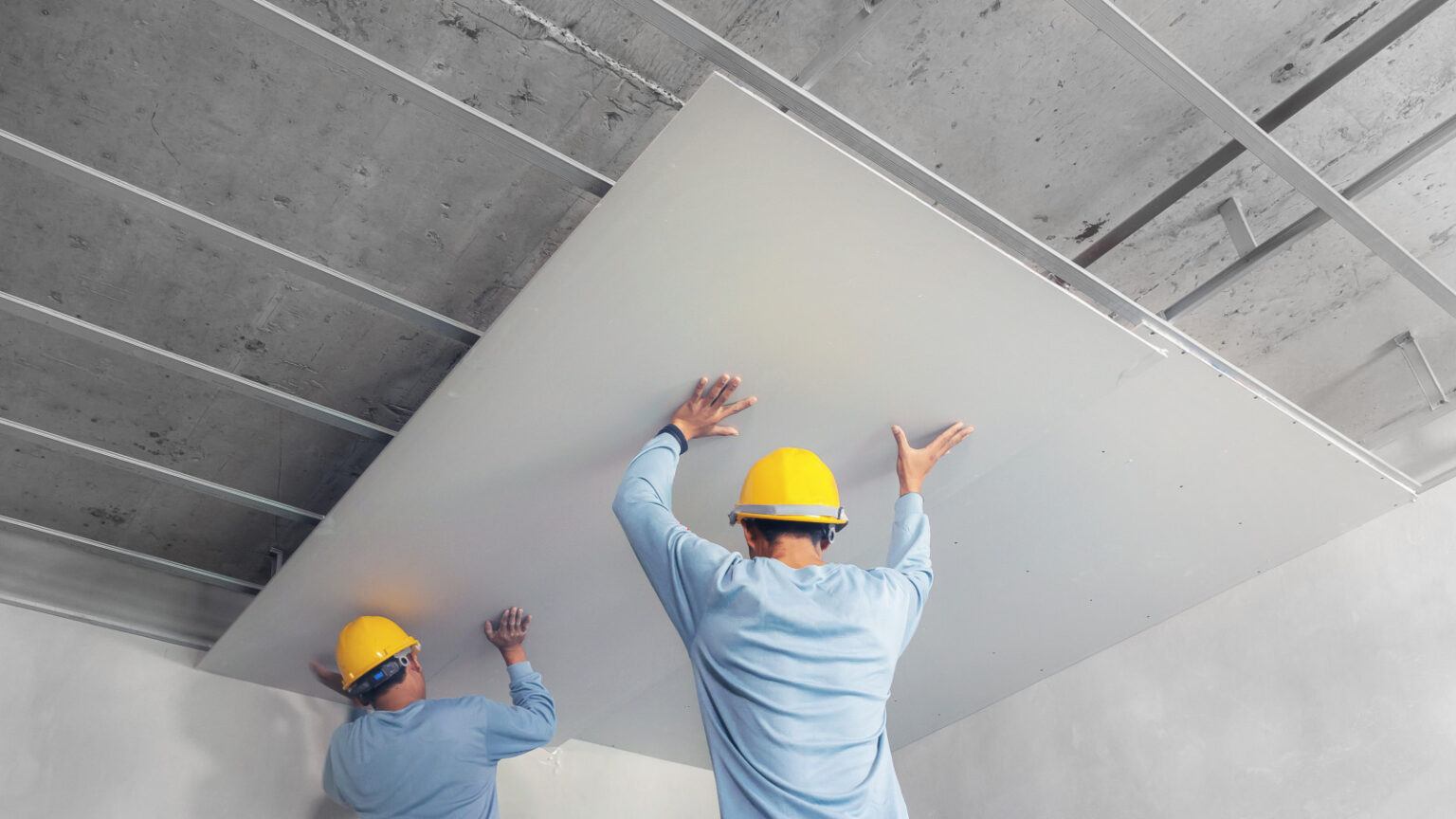Soundproofing is crucial in modern construction, whether you’re designing a peaceful home, a productive office, or a recording studio. Drywall gypsum board plays a significant role in reducing noise transmission between rooms. This article delves deep into how drywall gypsum board contributes to soundproofing, the best practices for installation, and additional methods to enhance noise reduction.
What is soundproofing?
Soundproofing refers to the process of reducing or blocking the transmission of sound between spaces. It involves using materials and construction techniques that absorb, dampen, or deflect sound waves. Effective soundproofing can minimize unwanted noise from neighbors, traffic, and other sources, creating a quieter and more comfortable environment.
How Does Drywall Gypsum Board Help in Soundproofing?
Drywall gypsum board is widely used for soundproofing due to its composition and ability to dampen sound waves. Here’s how it contributes to noise reduction:
1. Mass and Density
Drywall gypsum board has a dense core made from gypsum, a naturally occurring mineral that is excellent at absorbing sound. The greater the mass of a wall, the harder it is for sound waves to pass through. Using multiple layers of drywall increases the density and significantly improves soundproofing.
2. Sound Absorption Properties
Gypsum has inherent sound-absorbing qualities, which help in reducing airborne noise. It prevents sound from bouncing off walls, making the room acoustically more controlled.
3. Damping Effect
Specialized drywall types, such as soundproof drywall (e.g., QuietRock), contain viscoelastic polymers that convert sound energy into heat, reducing sound vibrations effectively.
4. Resilient Channel Installation
When drywall gypsum board is installed using resilient channels, it helps decouple the drywall from the studs, reducing the direct transmission of sound vibrations through walls and ceilings.
5. Multiple Layers with Green Glue
Using two layers of drywall gypsum board with Green Glue in between is a highly effective soundproofing technique. Green Glue is a damping compound that absorbs sound vibrations and prevents noise transmission.
Best Drywall Types for Soundproofing
Not all drywall is equally effective in soundproofing. Here are the best options:
1. Standard Drywall Gypsum Board
While standard drywall offers some noise reduction, it’s not the best for high-level soundproofing. It works best when combined with other soundproofing techniques.
2. Soundproof Drywall (Acoustic Drywall)
Products like QuietRock or CertainTeed’s SilentFX contain additional sound-dampening layers that significantly reduce noise.
3. Fire-Resistant Drywall (Type X)
Though mainly designed for fire resistance, Type X drywall has added density, which also helps with soundproofing.
4. Moisture-Resistant Drywall (Green Board)
For bathrooms and kitchens, where moisture is an issue, moisture-resistant drywall with added mass can provide both water resistance and improved soundproofing.
Soundproofing Drywall Installation Techniques
For the best soundproofing results, proper installation techniques are crucial. Follow these best practices:
1. Double-Layer Drywall with Green Glue
- Apply Green Glue damping compound between two layers of drywall.
- This method absorbs sound vibrations and prevents noise from passing through walls.
2. Use Resilient Channels
- Resilient channels create a separation between the drywall and the studs, reducing sound vibrations.
- Install the channels horizontally before securing the drywall.
3. Seal Gaps and Cracks
- Use acoustic caulk to seal any gaps around drywall, doors, and windows.
- Sound can pass through even small gaps, so sealing them is essential.
4. Install Soundproof Insulation
- Use mineral wool insulation or fiberglass insulation inside walls to absorb sound.
- This reduces the resonance within wall cavities and improves overall soundproofing.
Additional Soundproofing Techniques
To enhance the soundproofing effect of drywall gypsum board, consider these additional measures:
1. Mass Loaded Vinyl (MLV)
- A flexible soundproofing material that adds extra mass to walls and reduces noise transmission.
2. Acoustic Panels and Foam
- These materials absorb sound and reduce echoes inside a room.
3. Weatherstripping for Doors and Windows
- Sound leaks through doors and windows; adding weatherstripping can significantly reduce noise.
4. Floating Floors and Ceilings
- Installing a floating floor or ceiling decouples surfaces and prevents vibrations from traveling.
Benefits of Using Drywall for Soundproofing
|
Benefit |
Description |
|
Cost-Effective |
Drywall is an affordable way to improve soundproofing compared to specialized soundproofing panels. |
|
Easy Installation |
Can be installed using basic tools and techniques. |
|
Fire Resistance |
Some drywall types, like Type X, provide additional fire protection. |
|
Aesthetic Flexibility |
Drywall can be painted, textured, or covered with wallpaper, making it a versatile choice. |
Conclusion
Drywall gypsum board plays a vital role in soundproofing, offering an effective and affordable solution to reduce noise transmission. Whether you are renovating your home, building a new office, or creating a quiet studio, using the right type of drywall, combined with soundproofing techniques like Green Glue, insulation, and resilient channels, can significantly enhance noise reduction.
By implementing these strategies, you can create a quieter, more comfortable space while maintaining aesthetic appeal and affordability.
Frequently Asked Questions
1. Does drywall alone provide good soundproofing?
Standard drywall provides basic soundproofing, but for better results, it should be used with additional soundproofing methods such as Green Glue, insulation, and resilient channels.
2. What type of drywall is best for soundproofing?
Soundproof drywall like QuietRock or double-layered drywall with Green Glue offers the best results for noise reduction.
3. Can I install soundproof drywall myself?
Yes, with proper tools and techniques, DIY installation is possible. However, hiring a professional ensures optimal soundproofing.
4. How much does soundproof drywall cost?
Soundproof drywall costs more than standard drywall, typically ranging from $50 to $100 per sheet, depending on the brand and thickness.
5. What is the cheapest way to soundproof a room?
The most budget-friendly methods include using standard drywall with added insulation, sealing gaps with acoustic caulk, and applying Green Glue between drywall layers.
By leveraging drywall gypsum board’s natural soundproofing abilities and incorporating effective installation techniques, you can achieve excellent noise reduction for a peaceful and quiet space.

Leave a Reply
You must be logged in to post a comment.